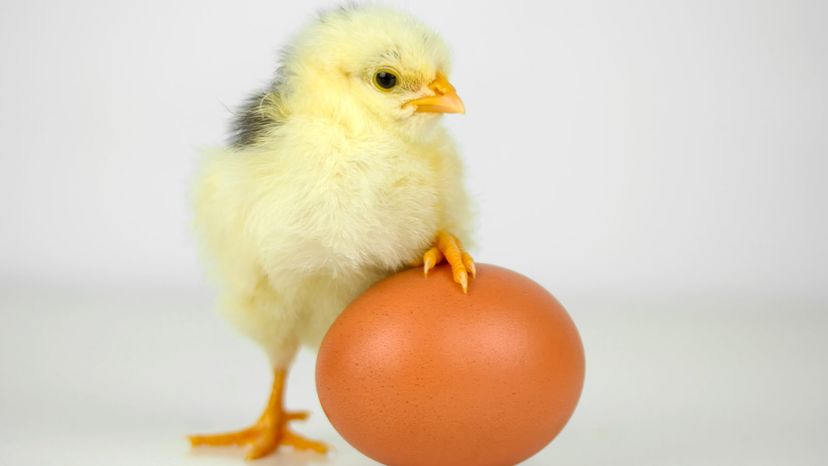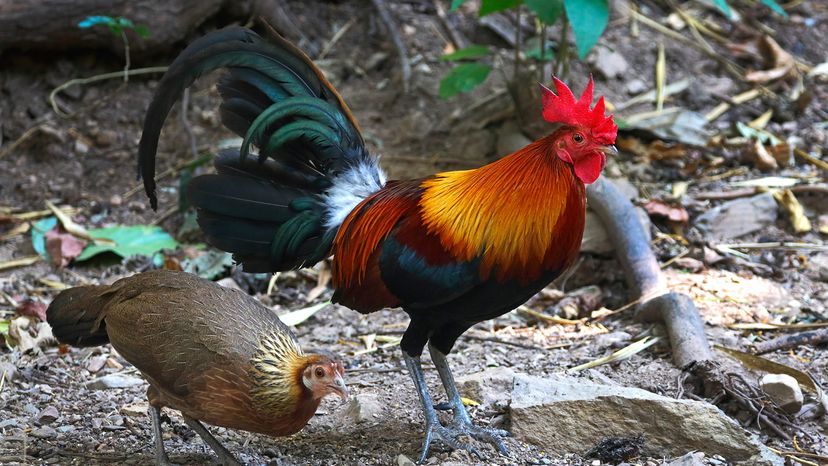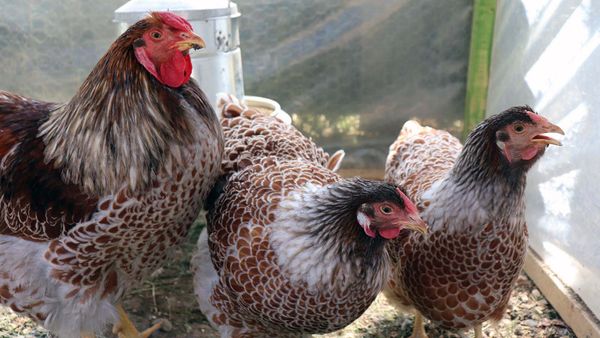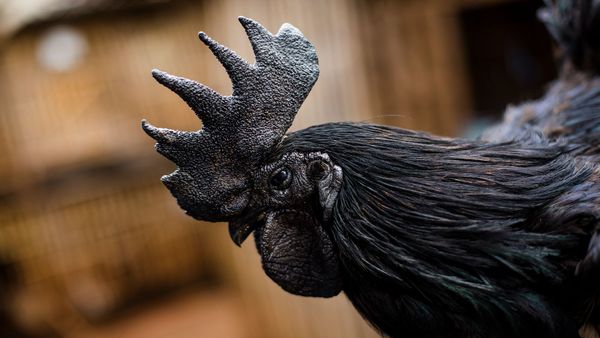
The age-old question of "What came first, the chicken or the egg?" has confounded many and inspired plenty of (hopefully) friendly debates. Here's the dilemma: Chickens come from eggs, but you need a chicken to lay an egg. So, can we figure out the answer to this question once and for all? Let's look at the evidence for both sides of the argument.
Advertisement
Was the Egg First?
Eggs have existed in nature for more than a billion years, long before any chicken was on the scene. Technically, an egg is just a container bound by membrane which allows an embryo to grow and develop. Almost all sexually reproducing species make eggs, which are the specialized female sex cells.
Animals originally laid their eggs in ponds and other water-borne environments so the eggs would not dry out. At some point (maybe around 312 million years ago) amniotic eggs came on the scene. These were eggs with three extra membranes inside: the chorion, allantois and the amnion. These membranes contained everything necessary for life as the eggs did not dry out. This allowed for land-based reproduction and paved the way for today's mammals, birds and reptiles.
In nature, living things evolve through changes in their DNA. In an animal like a chicken, DNA from a male sperm cell and a female ovum (egg) meet and combine to form a zygote, the first cell of a new baby chicken. This first cell divides innumerable times to form all of the cells of the complete animal. In any animal, every cell contains exactly the same DNA, and that DNA comes from the zygote. Eventually, a baby chick will hatch from the eggs laid by a hen and either a budding hen or rooster will be revealed. Once the chickens hatch the process starts all over again.
Advertisement
Or Was It the Chicken?

Although eggs predated chickens, these were not chicken eggs. The first chicken would have been a genetic mutation from two other birds that we might call proto-chickens. This domestication process happened over a long period of evolutionary history, during which the genetic makeup of non-chickens was edited through small changes caused by the mixing of male and female DNA or by mutations to the DNA that produced the zygote. These changes and mutations only have an effect when a new zygote is created. That is, two non-chickens mated and the DNA in their new zygote contained the mutation(s) that produced the first chicken like the ones we know and love today.
Scientists believe that the parents of the first chickens were red junglefowl, which are native to Southeast Asia. These particular birds lay a lot of eggs and are not as aggressive as many other species, so humans domesticated them. No one knows exactly when this happened, but it likely occurred around 10,000 years ago. So, if a chicken developed from a red junglefowl egg, then you could argue that the chicken came first and afterward produced the first chicken egg.
Advertisement
So, What Came First?
DNA analysis has shown that the chicken diverged from the red junglefowl perhaps 58,000 years ago, and also that the genes for the chicken's yellow color may have come from the gray junglefowl, implying there was some kind of interbreeding going on. Since we believe that the first chickens came into existence at the hands of human intervention, we say that the egg came before the chicken. Before that first true chicken zygote, there were only non-chicken species. The zygote cell is the only place where DNA mutations could produce a new animal, and the zygote cell is housed in the chicken's egg. So, the egg must have come first.
Advertisement


